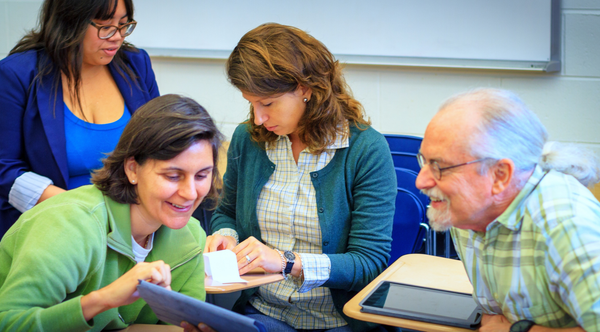10 Proven Formative Assessment Strategies for the Classroom

Formative assessment is one of the most powerful tools in a teacher’s toolbox. Unlike summative assessments, which evaluate learning at the end of a unit or course, formative assessments provide ongoing insights that help educators adjust instruction in real time. These strategies foster continuous feedback loops, support personalized learning, and cultivate a classroom culture grounded in growth and reflection.
Whether you're new to formative assessment or seeking fresh ideas, these 10 strategies help you stay connected to student understanding throughout a unit or lesson. They’re low-pressure, high-impact tools for better teaching and learning.
1. Exit Tickets
These short, end-of-class prompts reveal what stuck and what didn’t. A quick question or summary request helps assess understanding in just a few minutes. Great for: Checking comprehension and guiding the next day’s instruction.
2. Think-Pair-Share
Students first reflect, then discuss with a peer, and finally share with the group. This encourages participation from everyone and allows you to listen for misconceptions. Use in: Any subject where dialogue and reflection support understanding.
3. Low-Stakes Quizzes
Unscored or lightly scored quizzes reduce anxiety while still revealing how much students know. Digital platforms like Quizizz or Atomic Jolt’s assessment tools make this even easier. Ideal for: Immediate feedback and real-time insights.
4. One-Minute Papers
Ask students to write for one minute about what they learned, a question they still have, or the most confusing point they encountered. Why it works: It encourages reflection and quickly shows you where to focus next.
5. Peer Feedback
Let students review each other’s work using structured rubrics. This promotes critical thinking and gives students a chance to learn by reviewing. Pro tip: Start small with simple assignments and guided expectations.
6. Concept Mapping
Have students draw diagrams showing how ideas connect. This visual strategy is effective for identifying misunderstandings and reinforcing conceptual connections. Best for: Science, history, and interdisciplinary topics.
7. Digital Polls and Word Clouds
Use tools like Mentimeter or Padlet to ask questions and visualize responses. These encourage shy students to contribute and give a snapshot of class thinking. Perfect for: Engaging large or quiet classes.
8. Journal Entries
Ongoing written reflections help track personal learning and deepen understanding. You can respond to entries or use them to guide small group instruction. Great for: Self-awareness and tracking progress over time.
Seeking a digital solution to manage and respond to student reflections? Explore Atomic Journals — a flexible, educator-friendly tool for formative feedback and reflection.
9. Whiteboard Responses
In class, students can answer questions on mini whiteboards and hold them up for review. It’s quick, visual, and keeps everyone involved. Best for: Math, grammar, or quick comprehension checks.
10. Observations and Conferences
Sometimes, the best data comes from informal conversations or simply watching how students work. Short one-on-one chats can reveal more than a test ever could. Effective when: You need to understand a student’s thought process or offer targeted support.
Formative assessments aren’t just a way to measure learning—they’re a way to improve it. By incorporating these ten proven strategies into your teaching routine, you’ll create more responsive, student-centered classrooms. These tools help uncover gaps in understanding, boost engagement, and ensure that no student falls through the cracks.
Looking for a digital solution to streamline your formative assessments? Explore how Atomic Assessments can help you create engaging, flexible, and insightful checks for understanding across your curriculum.
Interested in learning more about Atomic Assessments? Schedule a personalized demo:



